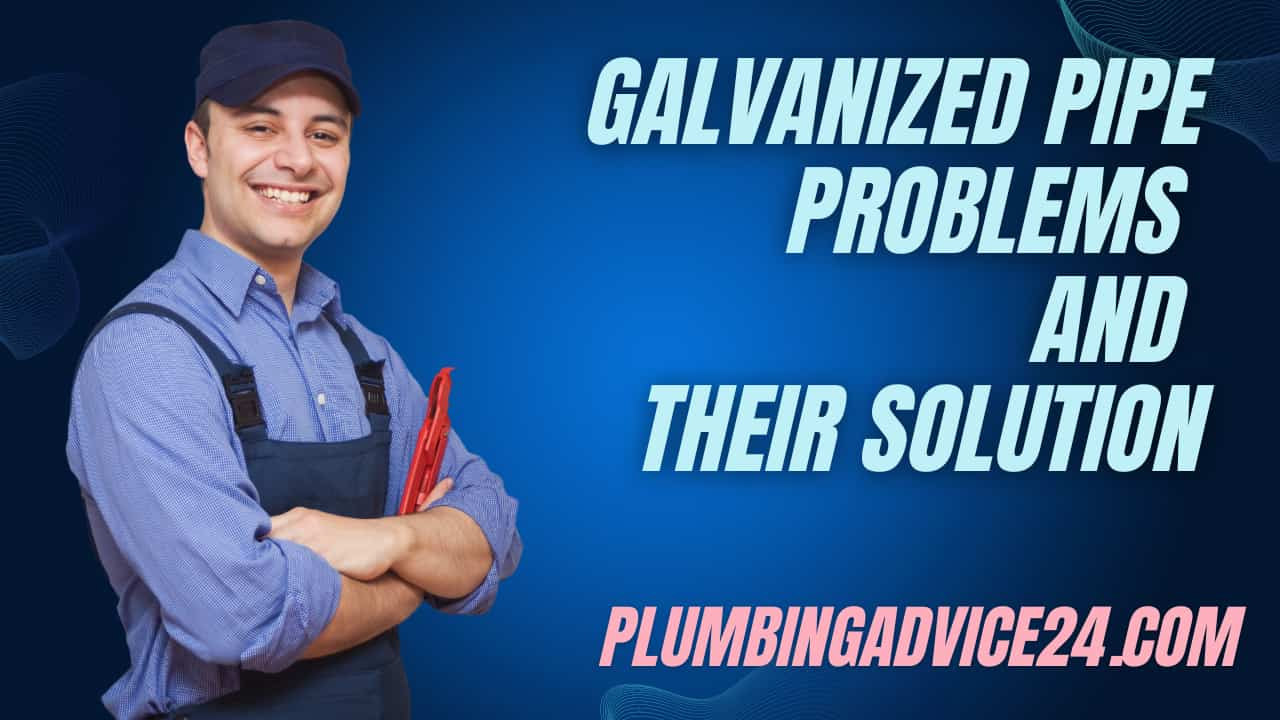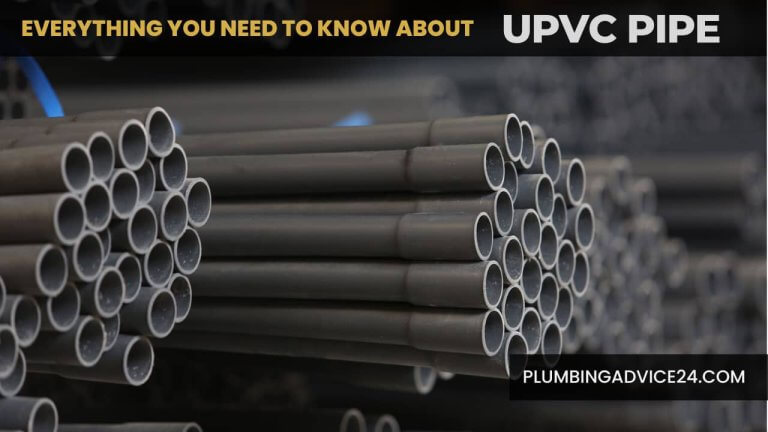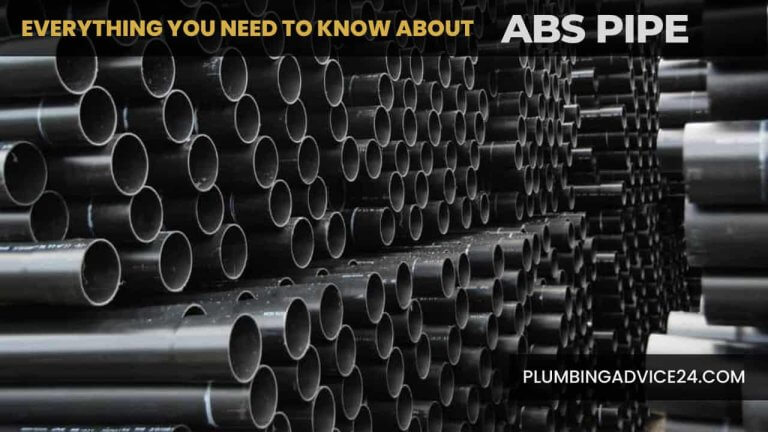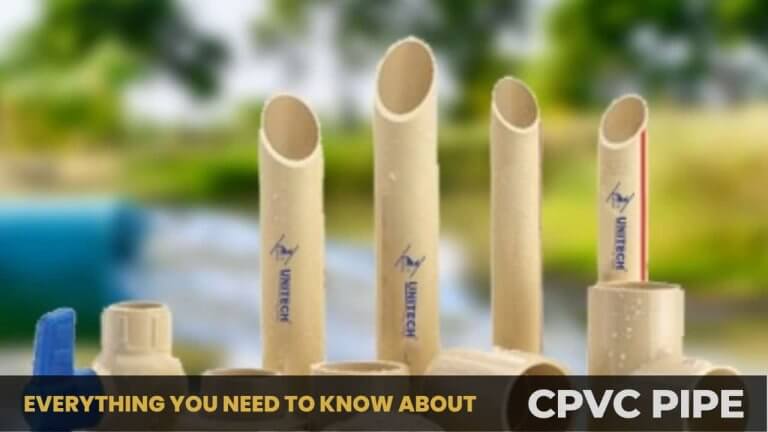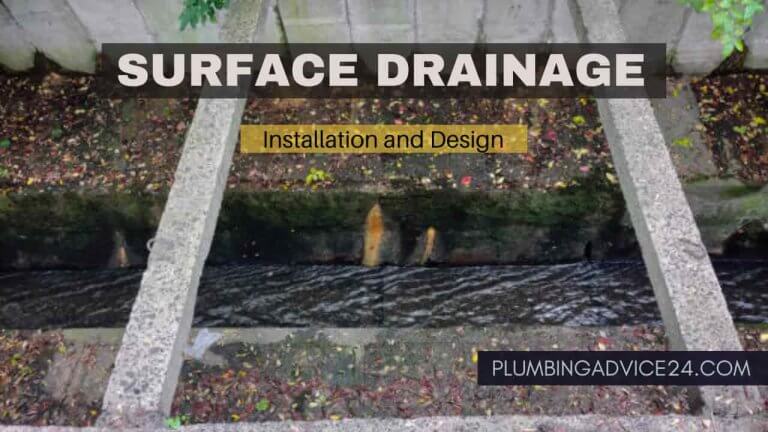Galvanized Pipe Problems and Replacement Cost
If your plumbing system is pre-1960, we will discuss in this chapter what precautions you should take. In this chapter, we will discuss the galvanized pipe problems. If you have galvanized pipe, you need to know what the problem is.
If you are suffering from this problem, we will study further what steps you should take, including cleaning out galvanized water pipes, galvanized plumbing replacement, repairing galvanized water pipes, and discussing the galvanized plumbing replacement cost, etc. So let’s move on,
Was your home built before 1960? If so, you are more likely to have galvanized steel pipes. And that means that galvanized steel pipes were coated with zinc to delay corrosion, but the zinc coating in those steel pipes has peeled off, and the steel pipes have corroded, causing galvanized plumbing problems.
You can see the signs of galvanized pipe corrosion before the water line breaks. Signs include rusty colored water, corrosion around pipe joints, corroded stains on pipes, or low water pressure. Rusty drain cleaners, constant water pressure, places where steel pipes are attached to copper or brass fittings, and corrosion due to time/age.
What Are the Galvanized Pipe Problems?
Galvanized pipes were used when a lead pipe was the only option, and with it came many health hazards. These pipes performed well for a few years. A few decades later, it was discovered that this galvanized / zinc coating shrinks and corrodes, leading to many plumbing problems.
The worst thing about galvanized plumbing is that these pipes look beautiful on the outside, but corrosion starts from the inside and often disappears. Pipes can also collect small crusts of lead particles and enter your drinking water.
Aside from potential health concerns, corroded pipes can also cause other problems. Here are some hints that you need to change your line as soon as possible.
The galvanized pipe problems are as below:
1. Low Water Pressure
Corroded galvanized pipe restricts plumbing lines, which can lower water pressure in house. If water is coming from some taps with better pressure than others, you may think you have some new pipes. So you can take the help of a home inspector to analyze the entire pipe system.
2. Water Discoloration
Iron and minerals in your pipes can contaminate your water with brown color and cause discoloration. If you see a simple brown spot near your faucet, understand that it indicates corroded pipes.
3. Galvanized Pipe Leaking at Joint
Homes with galvanized pipes eventually suffer from problems with leaks or pipe bursts. Pipe leaks often occur at pipe joints, usually behind walls where no one notices for a long time. Leaking galvanized pipes can cause extensive damage to your home.
Leakage occurs behind walls or under the floor and can cause serious damage if left untreated. In this worst-case scenario, the homeowner may need to not only replace the pipes but also repair any damage caused by water leaks in the foundation, drywall, flooring, ceiling, wooden support beams, and sheetrock.
A hidden water leak can also lead to mold damage. Adding insult to injury, leaking pipes are magnets for locusts.
4. Potential Health Risks
Galvanized pipes often contain a mixture of impurities such as lead or other heavy metals in the zinc layer. As galvanized pipes age, the zinc coating wears out, and the pipes corrode. Lead can form when pipes corrode.
Lead is a dangerous toxin that can enter your body through water pipes and harm your health. Galvanized water can be very harmful to health.
Must Read : What Is Galvanized Pipe | What Is Galvanized Pipe Used For | How to Measure Galvanized Pipe
How Do I Know If I Have Galvanized Pipes?
You don’t have to worry if your plumbing is currently installed, but if your building is pre-1960 and your plumbing hasn’t been updated, you need to worry. You can also test your plumbing pipe at home.
1. Scratch
You don’t have to dig up building records to determine if your home has galvanized pipes. Just find the area of the exposed pipe and scratch it with a coin or screwdriver to know its true color.
If it looks like a penny, you don’t have to worry; you have copper piping. If it looks metallic gray, you may have galvanized steel or iron pipes.
2. Magnet
You can also use a magnet to tell you what type of pipe you have. The magnet will not stick to copper or plastic pipes, while it will stick to galvanized steel pipes. You don’t have to worry if the magnet doesn’t stick to the pipes.
Must Read : What Is Plumbing Pipe | 22 Different Types of Plumbing pipes
How to Clean Galvanized Pipe?
You may not be able to do a thorough cleaning of your galvanized water pipe with the right tools, cleaning materials, and skills. You can call a professional to help clean the galvanized water pipes.
You can clean the galvanized steel from the outside using water and laundry detergent solution or distilled white vinegar.
Also, in some cases, the pipes are so corroded and galvanized pipe clogged that they cannot be saved by clean-up; you may need to replace the entire system.
Even if the problem is not so widespread, for the ideal long-term plan, you should completely replace your galvanized pipe with more modern, refined piping.
Must Read : What is Plumbing Tools | 31 Types of Plumbing Hand Tools
Should Galvanized Pipes Be Replaced?
The short answer is yes; if your home is equipped with galvanized pipes, you should definitely check out the upgrade. Replacing your old pipes with new copper pipes or PEX pipes can be a daunting task, but the cost of repairing an old system can quickly outweigh these upfront costs over time.
However, if your pipes seem to be in good condition at the moment and you haven’t planned on living in your home for many decades, you can recover with a little minor maintenance.
The first thing you should consider is saving money on future repairs. Because we know that galvanized pipes break over time, replacing them can significantly reduce the risk of costly leaks, pipe rupture, and water damage.
Leakage can damage many other parts of the home from tampered water pipes, which can cause cracks in the walls, concrete leakage, mold buildup, damage to electronics and furniture, etc.
If the leak is not visible to the naked eye, it will not go unnoticed for a long time. Hundreds or even thousands of gallons of water are wasted every year, and the water bill can mysteriously rise.
Even if the galvanized pipes in the old building seem to be in good condition, you are still checking, and if the pipe is in the final stages of its life, you can take part in permanent repairs immediately after moving inside.
Seek professional advice on how to best handle your galvanized piping problems.
Must Read : What Type of Piping Is Used in Homes | Types of Pipes for Water Supply
Alternatives to Replacing Galvanized Pipe
If the latest inspection of your home shows that you have galvanized pipes, you can consult a professional to replace them. In the meantime, you have to think about what kind of pipes you would like in your new home. Here are the options for you:
1. Replacing Galvanized Pipes with Copper
Copper pipes are probably the most common piping in American homes. There are 3 different types of these pipes. The thinnest (M) copper pipe lasts for about 20-50 years, while the thickest (K) copper pipe can last for 100 years.
These pipes can be expensive, but you can use these pipes if you are thinking about the longevity of plumbing.
2. Replacing Galvanized Pipes with PEX
PEX (cross-linked polyethylene) pipe has become popular over the last few decades; it is a flexible tube in addition to being durable. Unlike copper pipes, they are not prone to corrosion, and they can withstand heat and cold temperatures.
You will find these in black and white or blue and red, with a lifespan of 40-50 years.
3. Replacing Galvanized Pipes with PVC
PVC (polyvinyl chloride) pipes are a good option and also cheap. Your standard PVC pipes are easily recognizable. These pipes made of white plastic last 25-40 years. Their lifespan depends on the environment in which they live.
For example, PVC can leak in excessive heat and cause serious damage to underground conditions. Fortunately, CPVC pipes (chlorinated polyvinyl chloride) can withstand warmer temperatures compared to standard PVC.
Must Read : What Is Plumbing Pipe Materials | What Is Used to Make Plumbing Pipes
Cost to Replace Galvanized Pipes in House
Galvanized steel pipes were common in U.S. homes until copper became popular in the 1950s and 1960s. Although galvanized pipes were coated inside and out to prevent corrosion, there were some problems with them. It can corrode and rupture over time, restricting the flow of water or leaking pipes.
The cost of replacing galvanized pipes in your home can vary greatly depending on the size of the home. The cost will depend on how much piping you need, along with the pipe you choose to replace your galvanized pipes.
The cost to replace galvanized pipes for two homes is rarely the same, so plumbing replacement costs will also vary. Homeowners should expect the replacing galvanized pipes cost to be much lower than the estimated $ 1,500 to $ 15,000 or more.
Galvanized pipes are usually replaced with PEX, PVC-CPVC, or copper pipes, the estimated cost of which is as follows.
1. Replacing Galvanized Pipes with PVC Cost
When installing PVC pipes, the average cost of plumbing replacement for an entire house with two bathrooms can be between $ 1500- $ 4000. while in a single house installing CPVC pipes, the replacement cost can be between $ 4000- $ 10000.
2. Replacing Galvanized Pipes with PEX Cost
When installing PEX pipes instead of galvanized pipes, the average cost of plumbing replacement for an entire home with two bathrooms is between $ 3500- $ 8000.
3. Cost to Replace Galvanized Pipes with Copper
When installing copper pipes instead of galvanized pipes, the average cost of an entire home plumbing replacement in two bathrooms is between $ 8000- $ 15000.
Must Read : Types of Metal Pipes | Seamless Vs Welded Pipes
How Many Galvanized Pipe Problems Are There?
The worst thing about galvanized plumbing is that these pipes look beautiful on the outside, but corrosion starts from the inside and often disappears. Pipes can also collect small crusts of lead particles and enter your drinking water.
Aside from potential health concerns, corroded pipes can also cause other problems. Here are some hints that you need to change your line as soon as possible.
The galvanized pipe problems are as below:
- Low Water Pressure
- Water Discoloration
- Leaking at Joint
- Potential Health Risks
What Is the Average Cost of Replacing Galvanized Plumbing?
The average cost to replace galvanized plumbing for two homes is rarely the same, so plumbing replacement costs will also vary. Homeowners should expect the replacing galvanized pipes cost to be much lower than the estimated $ 1,500 to $ 15,000 or more.
Can Galvanized Pipe Leaking at Joints?
Homes with galvanized pipes eventually suffer from problems with leaks or pipe bursts. Pipe leaks often occur at pipe joints, usually behind walls where no one notices for a long time. Leaking galvanized pipe can cause extensive damage to your home.
How Do Fix Galvanized Pipe Leak?
Pinhole leaks in galvanized pipes are small, so the easiest way to repair them is to fill them with epoxy putty. The best tool for the job is an epoxy putty stick, which combines resin and hardener in a pre-measured format.
To use an epoxy putty stick, you tear off the required amount of putty and mix it by hand. The putty will quickly turn into a uniform color, at which point you will push it into the pinhole. It will then fill the pinhole and seal it tightly.
Can I Repair Galvanized Pipe?
Galvanized pipe repair is only a temporary solution as, eventually, the pipe erosion will continue. But instead of leaving the leak indefinitely, it is best to repair the galvanized pipe as a temporary solution until you have time to replace the pipe.
If You Liked This Post? So Share It with Your Friends
Suggested Articles :
- What Is a PVC Pipe | How to Measure PVC Pipe Size | PVC Pipe Installation Cost
- Types of PVC Pipe | What Is the Difference Between Schedule 40 and Schedule 80
- Different Types of PEX Pipe | How to Make PEX Connections
- Difference Between ABS and PVC | How to Connect ABS to PVC Pipe | Which is Better ABS or PVC Pipe
- What Is a Copper Pipe | Types of Copper Pipes | How to Measure Copper Pipe Size | Copper Pipe Cost
- What Is a Sewer Line | How Many Types of Sewer Pipes | Best Sewer Line Insurance Company
- Types of Steel Pipes | Stainless Steel Pipe Vs Carbon Steel Pipe
- Types of Metal Pipes | Seamless Vs Welded Pipes
- Difference Between PVC and CPVC Pipe | Can You Attach PVC to CPVC Pipe | Which Is Better PVC or CPVC Pipe
